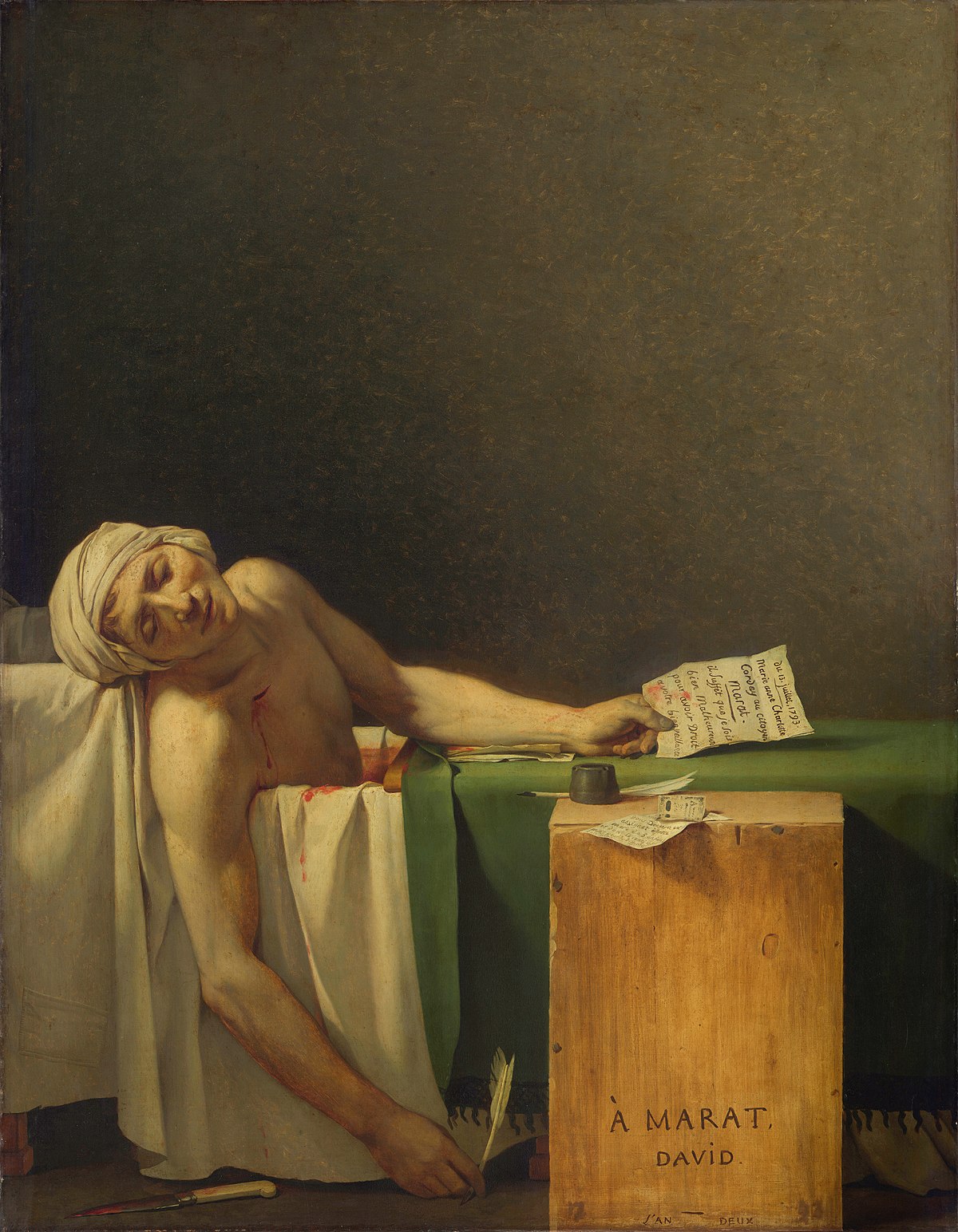The Death Of Marat

In the annals of history, there exist moments so poignant, so charged with the fervor of revolution and the weight of human destiny, that they etch themselves into the collective consciousness of mankind. One such moment, forever seared into the pages of revolutionary France, is the death of Jean-Paul Marat—a figure whose life and demise epitomize the tumultuous era of the French Revolution.
Marat, a fervent journalist and a key architect of the Revolution, was both revered and reviled for his radical views and uncompromising stance against the monarchy. His publication, L’Ami du peuple (The Friend of the People), served as a fiery mouthpiece for the disenfranchised masses, urging them towards insurrection against the oppressive regime.
Tragic Demise of Marat
On that fateful day of July 13, 1793, Marat’s life was tragically cut short within the confines of his own home—a modest bathtub serving as both his sanctuary and his final resting place. The circumstances surrounding his death have been the subject of much speculation and intrigue, shrouded in the mists of historical ambiguity.
The perpetrator of this heinous act was Charlotte Corday, a young woman driven by a fervent belief in the restoration of order and the preservation of the Revolution’s ideals. Sneaking into Marat’s quarters under the guise of delivering vital information, Corday plunged a dagger into his chest, silencing the voice that had echoed across the streets of Paris with unwavering conviction.
A Tale of Revolution and Remembrance
The aftermath of Marat’s assassination was swift and tumultuous, sending shockwaves through the heart of revolutionary France. Corday, hailed as a martyr by royalists and vilified as a traitor by revolutionaries, faced swift justice at the guillotine, her actions serving only to fuel the flames of unrest that engulfed the nation.
Yet, in death, Marat attained a martyrdom that transcended the confines of mortal existence. His likeness immortalized in Jacques-Louis David’s iconic painting, “The Death of Marat,” he became a symbol of revolutionary zeal and the relentless pursuit of liberty—a beacon for future generations to rally around in their quest for emancipation.
Conclusion
But beyond the realm of politics and ideology, Marat’s death serves as a poignant reminder of the human cost of revolution—the lives lost, the dreams shattered, and the ideals tarnished by the brutal realities of conflict. In the glistening waters of that humble bathtub, the aspirations of a nation were washed away in a tide of blood and betrayal.
Today, as we reflect upon the legacy of Jean-Paul Marat, let us not merely remember him as a martyr of the Revolution, but as a testament to the indomitable spirit of human resilience in the face of adversity. For in his sacrifice, we find the echoes of our own struggles, and the enduring hope that springs eternal from the ashes of tragedy.





